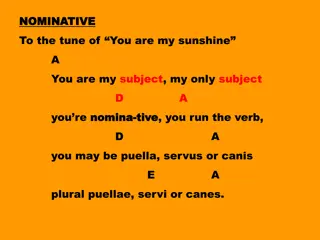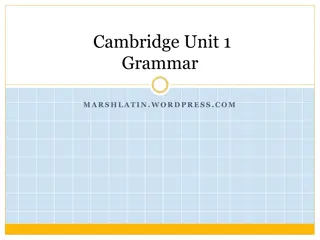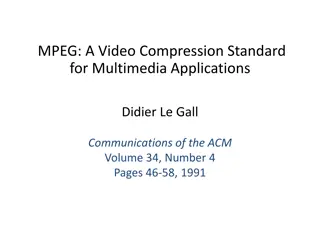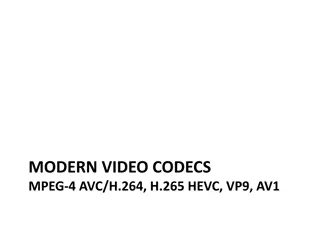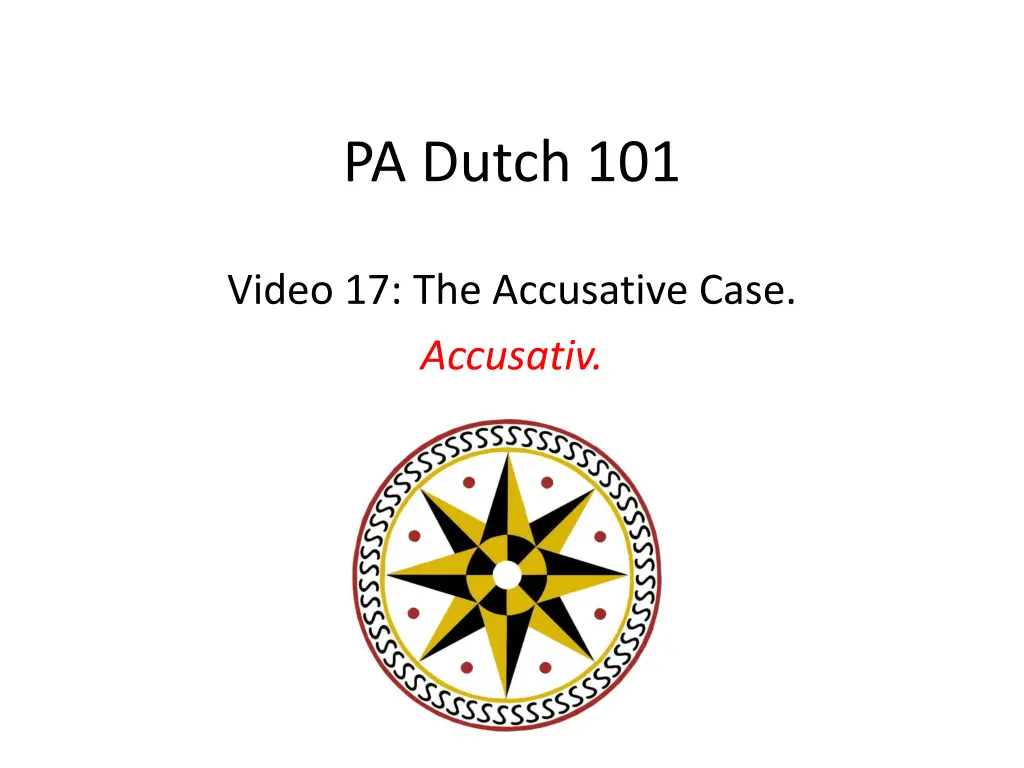
Understanding the Accusative Case in PA Dutch
Learn about the Accusative Case in PA Dutch, which is used to identify the direct object in a sentence. Explore definite and indefinite articles, personal pronouns, and prepositions in the Accusative Case, along with examples for better understanding.
Download Presentation

Please find below an Image/Link to download the presentation.
The content on the website is provided AS IS for your information and personal use only. It may not be sold, licensed, or shared on other websites without obtaining consent from the author. If you encounter any issues during the download, it is possible that the publisher has removed the file from their server.
You are allowed to download the files provided on this website for personal or commercial use, subject to the condition that they are used lawfully. All files are the property of their respective owners.
The content on the website is provided AS IS for your information and personal use only. It may not be sold, licensed, or shared on other websites without obtaining consent from the author.
E N D
Presentation Transcript
PA Dutch 101 Video 17: The Accusative Case. Accusativ.
The Accusative Case As we covered in Video 12, the Nominative Case identifies the Subject of a sentence. The Accusative Case is used to identify the Direct Object of a sentence. In English: Alice buys the book. Alice is the Subject, book is the Direct Object. Die Alice kaaft es Buch.
The Definite Article (THE) In the Accusative Case, we use the following definite articles: Masculine Feminine der Neuter es Plural die die
The Indefinite Article (A/AN) The Indefinite Article does not specifically identify the noun that they are associated with. The book. vs. A book. Masculine Feminine en Neuter en Plural en
Accusative Personal Pronouns Just like the Nominative Case, the Accusative Case has its own Personal Pronouns: Nom. ich du er sie es Accusative Nom. mich dich en sie es Accusative uns eich sie mir dihr sie
Accusative Personal Pronouns Remember that Personal Pronouns replace nouns. Accusative PPs replace the Direct Object: Ich kenn der Ralph. Ich kenn en.
Accusative Prepositions Unlike the Nominative Case, the Accusative Case has a set of 7 Prepositions. The rule when using these prepositions is that the noun associated with the preposition always takes the Accusative Case!
Accusative Prepositions bis until, till, by darrich through fer for geeich against gege against um around unne without
Accusative Prepositions Darrich der Daag duh ich viel. Es Buch iss fer mich. Der Hund laaft um der Gaarde.
Accusative Prepositions Some Accusative Prepositions and Articles are contracted as long as there is a special emphasis on the article: darrich + es = darrich s fer + es = fer s geeich + es = geeich s um + es = um s
Iewing - Practice ___ (the) Daadi leest ___ (a) Zeiding (f). Der Daadi leest en Zeiding. ___ (the) Fraa kaaft ___ (a) Tomaet (n). Die Fraa kaaft en Tomaet. Ich kenn _____ (him). Ich kenn en. Iss es Gschenk fer ___ (me)? Iss en Gschenk fer mich?
Bis die naegschde Video, Macht s gut un schwetzt Deitsch! E-Poscht schreiwe: busterpa@yahoo.com







